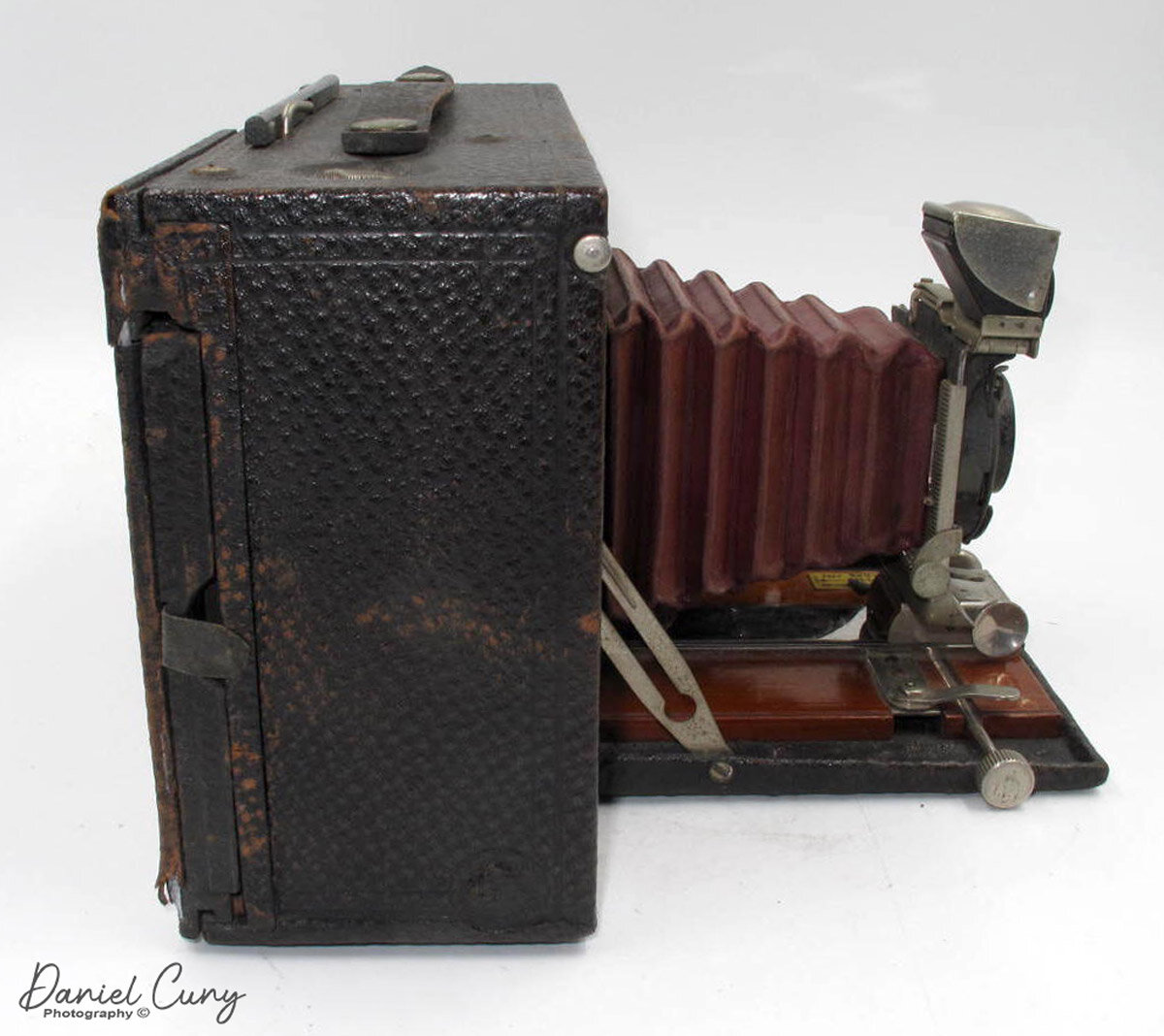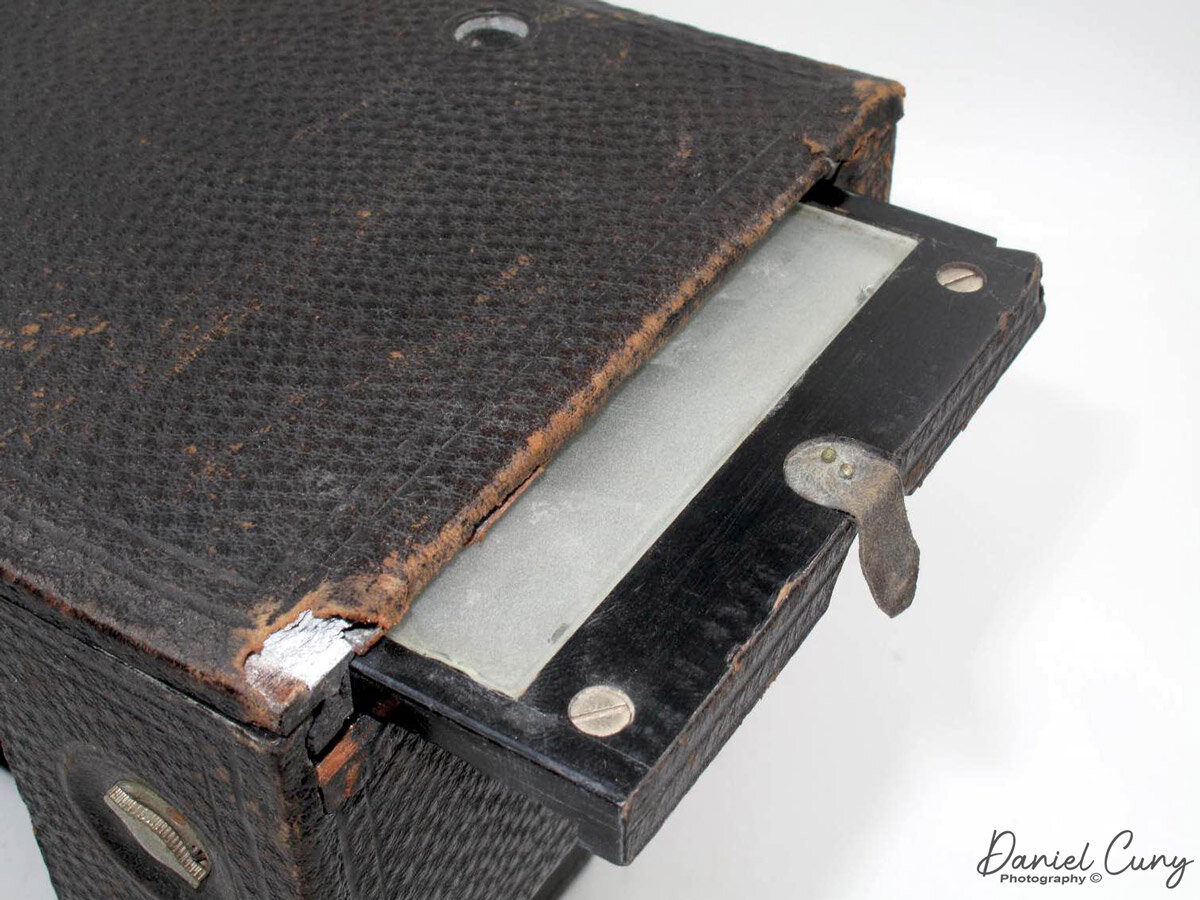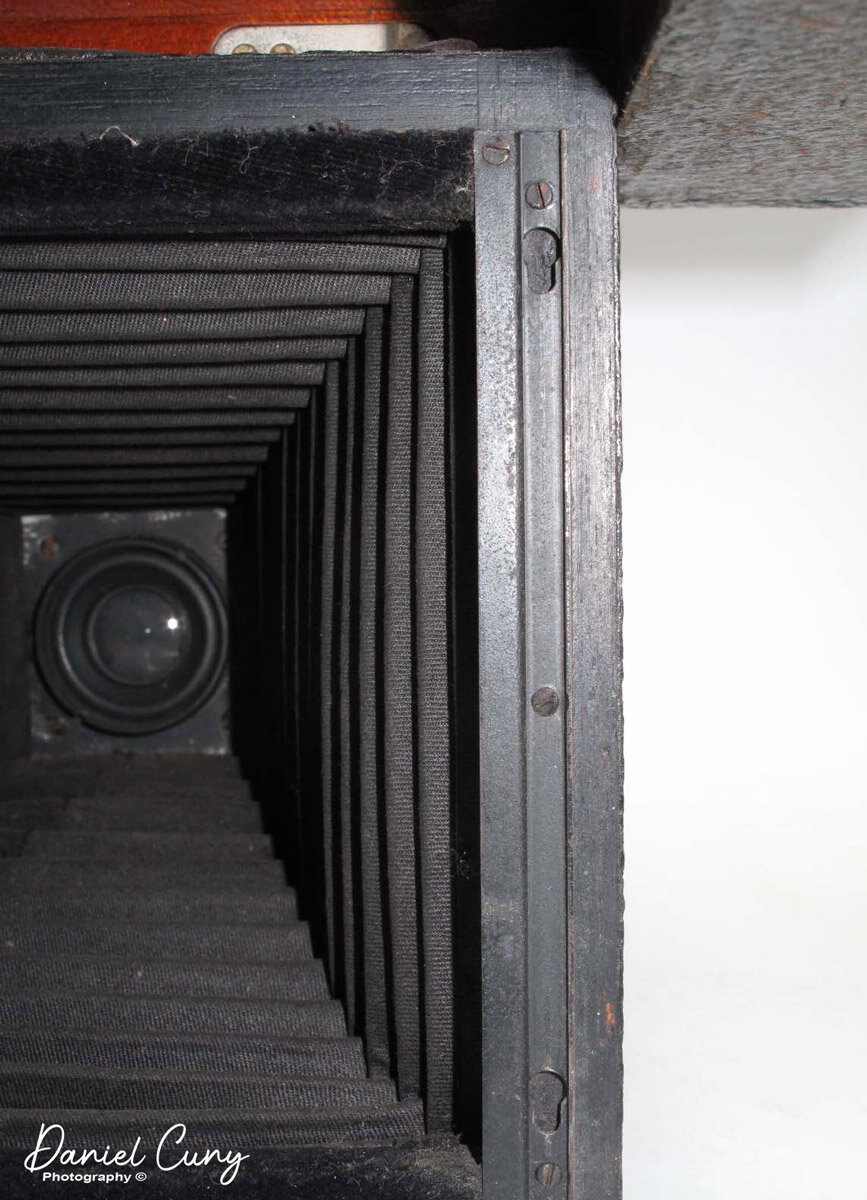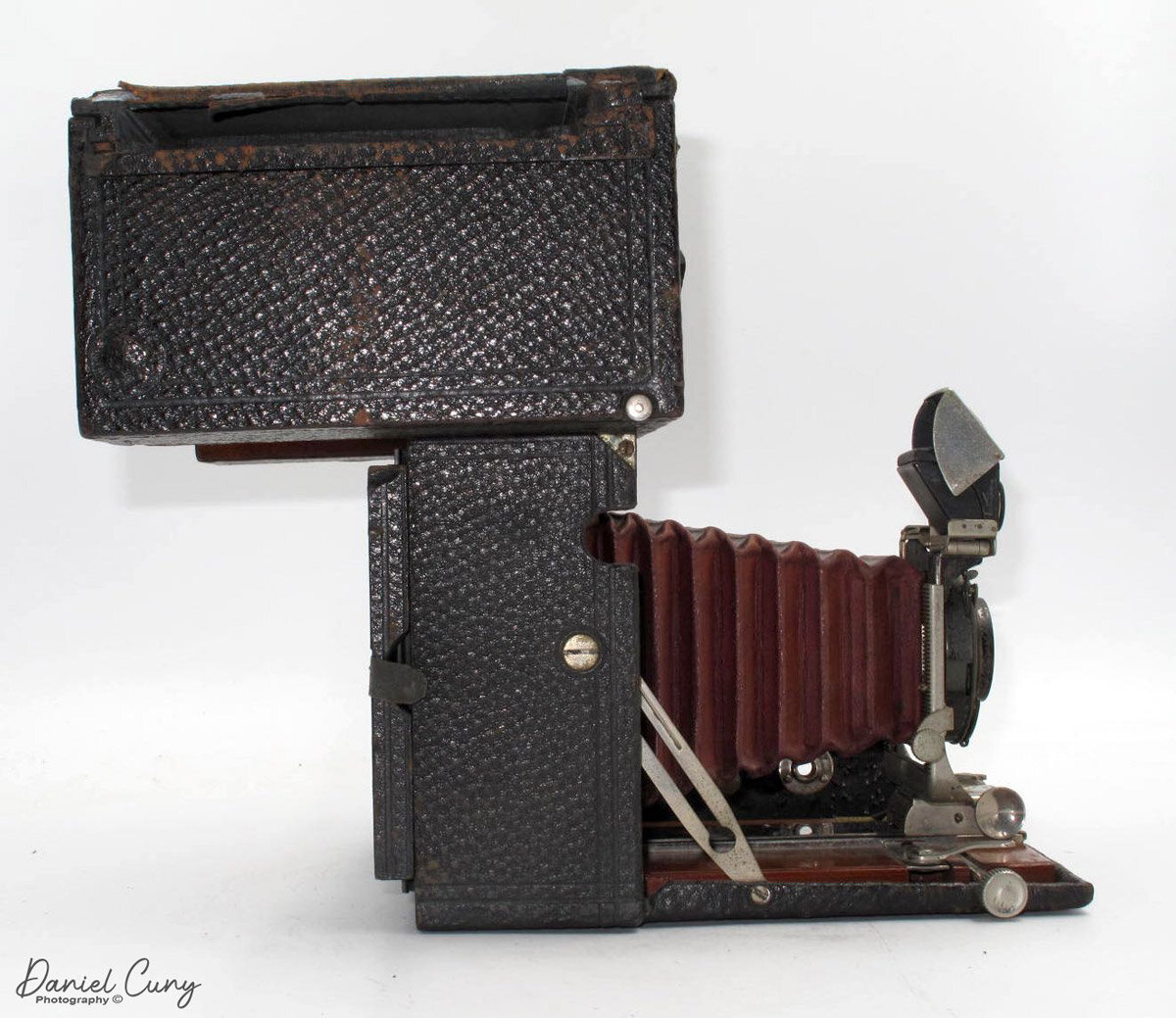When I started to put this week's post together, it was on a different camera. I had the first 6x7cm camera picked, National Graflex. It was in excellent working condition, but when I went to load the camera with film, the shutter failed and needed to jump to a different camera. I had the No. 4 Screen Focus Kodak picked for next week, but all the best plans need a backup, and this is mine.
Front view with film chamber up for focusing
Company Background
I find it fascinating that one of the largest companies in the history of photography, if not the largest at its height, didn't adapt to photography's future. I'm sure many of you know the story of Kodak and George Eastman, but researching the post, I found some pretty fascinating facts about the man and the company. Especially in the early part of the Kodak story.
George Eastman was born on July 12, 1854, in the small town of Waterville, NY. When he was four years old, the family moved to Rochester, NY, where his father started Eastman Commercial College. Tragically his father died, and the college failed. He had dropped out of high school to support the family and got his first job at 14.
When George was 24, he had planned on taking a trip to Santo Domingo when a friend told him he should document the journey. At the time (1878), the photographers would coat the wet plates themselves. He realized the amount of equipment needed to take on the trip was enormous, but this is where he fell in love with photography. He wanted to make the process more simplified and had read in the British Journal about people experimenting with gelatin emulsion. After working for almost three years trying to perfect this, by 1880, he invented a dry plate formula and the machine to produce them in quantities.
In 1883, Kodak shocked the industry when he introduces the first film on a roll. In 1888, the company introduced the first camera with a roll of film with enough exposures for 100 photos. The camera sold for $25.00 and would be returned to the company to have the film processed, prints made, and re-loaded with another roll for $10.00. If you want to read more about the man and the company, you can do so here.
Film chamber down.
The Camera
The No. 4 Screen Focus Kodak is a very odd and unusual camera and produced between 1904-1910. According to records, there were only 4000 made. It's like having a roll film and 4x5 view camera in one camera. Well, that's pretty much what this camera is. It allows the photographer to load a roll of No. 123 film in the camera. Putting in the dark slide, swing the roll film up. You'd attach a focusing screen for focus, then swing the film back into place to take the photo. Another great thing about this camera is you'd get twelve 4x5 images on the roll of film. I believe it was competition for the Blair Focusing Weno Hawk-Eye introduced in 1902.
Here's a look at my camera. It measures 10.25" wide x 5.75" tall x 3.5" deep and weighs just under 4 lbs, 3 lb. 13.8oz to be exact, without film. My camera still has the handle attached, which is a nice feature. To open the front door, you press a concealed button on the top towards the camera's right side. Pinching the two locking grips just below the lens and sliding the beautiful red bellows onto the rosewood focus track is smooth. My camera has a rapid rectilinear lens in a Kodak automatic shutter. Just above the lens is a brilliant two-way finder with a bubble level next to it. There is also a knob that allows the rise or fall of the lens. On the side of the lens-bed is a critical focusing knob if you're using the ground glass.
A small button on the top towards the rear and the right allows the back to slide off, allowing the photographer to load the film. This is where the photographer would also attach the optional glass plate adapter. Mine doesn't have this, but I'm still looking to find one. Also, on the back of the film back is the red window to see the film numbers when you advance the film and the holder for the ground glass used for focusing.
Once you have the film loaded and the lens pulled out, you're ready to make the exposures. On top of the camera is a dark slide. Make sure it's in the camera. There is a little "L" bracket that holds it into place. On the right side of the camera, the bottom front corner is another concealed button that, when pressed, allows the film area to swing up over the camera. Pull out the ground glass, and attach it to the back of the camera via two small clips that allow you to slip it into place. Open the lens for focus. You could check the depth of field too by stopping down the lens. Close the lens. Now it's time to lower the film chamber. On the left side is a release that allows the film chamber to be lowered back into place. Set shutter speed, and aperture, pull the dark slide out, and expose the film. Then wind the film to the next frame via a knob on the top left. See, It's simple.
I wish I had images from this tremendous camera, but I don't have the glass plate holder, which I might be able to use film in or have the ability to find a roll of No. 123 film, which ended production in 1949.
Front view
I appreciate you taking a few minutes out of your day to look this post over. Please let me know if you have any questions or concerns about this or any other I've posted. Until next week, please be safe.







